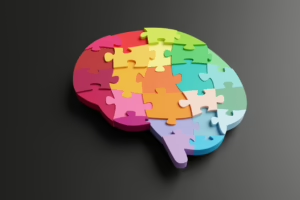The loss of skills, as more older workers leave the workforce and productivity suffers; the increase in worker loneliness that will impact productivity; the future of DEI are among the biggest challenges HR will face by 2025. Gartner contributors share their predictions.
Gartner predicted that companies would face a skills gap this year as the biggest proportion of global workers reach retirement age. Employees will adopt AI for fair performance management and loneliness will become a major business risk. HR in the UK is gaining prominence as the Employment Rights Bill nears completion. This bill will be implemented by 2026.
A recent Gartner survey found that 60% of employees believe they don’t receive enough practical training to perform their job effectively.
In order to address this issue, businesses need to adopt collective intelligence and technology-supported capability so that knowledge can be easily transferred between experts with skills and novice employees in need of skills.
Emily Rose McRae is a senior director analyst at Gartner’s HR practice. She said, “This year’s predictions address the three key challenges that executives will face in 2025 – new demands for future-ready workers, the changing role of managers and leadership, and the emerging talent risks in organisational strategy.”
Gartner’s nine workplace trends for 2025 that HR should consider:
Expertise gap grows
By 2025, the world’s largest proportion of workers will be retiring, causing organisations to lose their most experienced staff at an increasing rate. Across industries, technology is transforming the relationship between experts and novices. Employees report that they lack hands-on training. A Gartner survey conducted in May 2024 of 3,375 employees revealed that 6/10 of them said they were not receiving the on-the job coaching needed to support their core skills.
Organisations will ensure that the knowledge flow between employees with skills and those who lack skills is easy to manage.
Prepare for technological innovation
Many CEOs have their sights set on growth by 2025, citing AI and technology as significant facilitators. The generative AI solutions are not yet delivering on the productivity gains they promised, but the results so far have revealed the intractable and inherent barriers that current organisational structures have to adopting new technology.
This year, the executives of organisations will implement fundamental changes in their operations, creating flatter and less hierarchical structure.
The ‘Nudgetech’can bridge the communication gap
Current and future workers have a diverse range of cultural norms and expectations, including those relating to communication. Many of these are incompatible. The conflict between employees is increasing and, together with a growing communication gap among professionals, it is preventing innovation and collaboration.
“86% of employees believe that algorithms can give them more accurate feedback than their current managers”
Leading companies will begin experimenting with “nudgetech”, a new set of AI-powered tools in 2025 to restore effective collaboration. AI can be used to remind employees to send emails instead of text messages based on the preferences of a client, to remind managers about their direct reports working styles or to generate customized communication tips.
Employees prefer bots to bosses
AI is still being debated in the performance management field, but it’s not surprising that employees are demanding AI. A Gartner survey conducted in October 2024 of almost 3,500 employees revealed that 86% believe algorithms can give more accurate feedback today than their managers. A June 2024 Gartner study of a similar group of employees found that 57% of respondents believed humans were more biased when making compensation decisions than AI.
Automated technology, when used correctly, can help organisations to reduce the burden on managers by removing some difficult tasks. The human being in the loop will still make the final decisions.
“When organisations adopt a human-first AI approach, employees are 1.5x more likely than other workers to be high performers. They’re also 2.3x more likely to have a high level of engagement.”
Guidelines for AI-generated Work
Companies that offer AI tools are actively marketing them as a filter for workplace competence – an easy way to make employees’ efforts look highly productive to managers and coworkers.
As it becomes more difficult to distinguish between employees who rely on AI and those whose quality of work is a result of their own efforts, organisations will have to find new ways to reward high performance. HR must develop guidelines that clearly define what AI-generated work is acceptable and not. Managers must be trained to recognize when employees are over-relying on AI, and intervene accordingly.
DEI’s ambitions are shifting
Executives will be anxious as DEI initiatives face increasing politisation and scrutiny throughout 2024.
Most organisations will continue to pursue DEI goals in 2025. They will, however, shift their investment towards greater inclusion and belonging among all employees rather than focusing on underrepresented talent and representation.
This pivot will allow organisations to improve their talent outcomes, innovation and inclusion by increasing inclusion and belonging.
AI: Short-term vs. long-term
AI-first organizations make organisational and strategy changes based upon the short-term potential of GenAI, while discounting longer-term considerations. These longer-term effects include increased friction at work, the need for a new role and workflow, barriers to adoption and more.
In 2018, progressive organizations will adopt an employee-centric approach that places people first and technology second. Human-first AI approaches lead to 1.5 times higher performance and 2.3x greater engagement among employees.
Loneliness is a risk to business
Loneliness is a public-health crisis. Loneliness can be a serious business risk. When employees feel lonely, they are less engaged and perform worse.
In 2025, organisations will mitigate loneliness in the same way they would manage any other risk. They will start by targeting interactions with employees, identifying their key needs for collaboration and reinforcing new, human-centric collaboration norms.
Responsible AI is driven by employee activism
The absence of government, organisational or vendor action in the US, and to some extent the UK, on AI has led employees to take the initiative themselves, defining the norms for human-technology cooperation. ( In the EU, new laws are being implemented on AI.)
Employee activism will continue to drive the adoption of responsible AI in organisations this year. This is what progressive organisations will do, co-creating AI values and strategies with their employees. They may also crowdsource AI use cases from employees directly before deciding on which capabilities to test, and incorporate multiple avenues for gathering and evaluating employee input.



